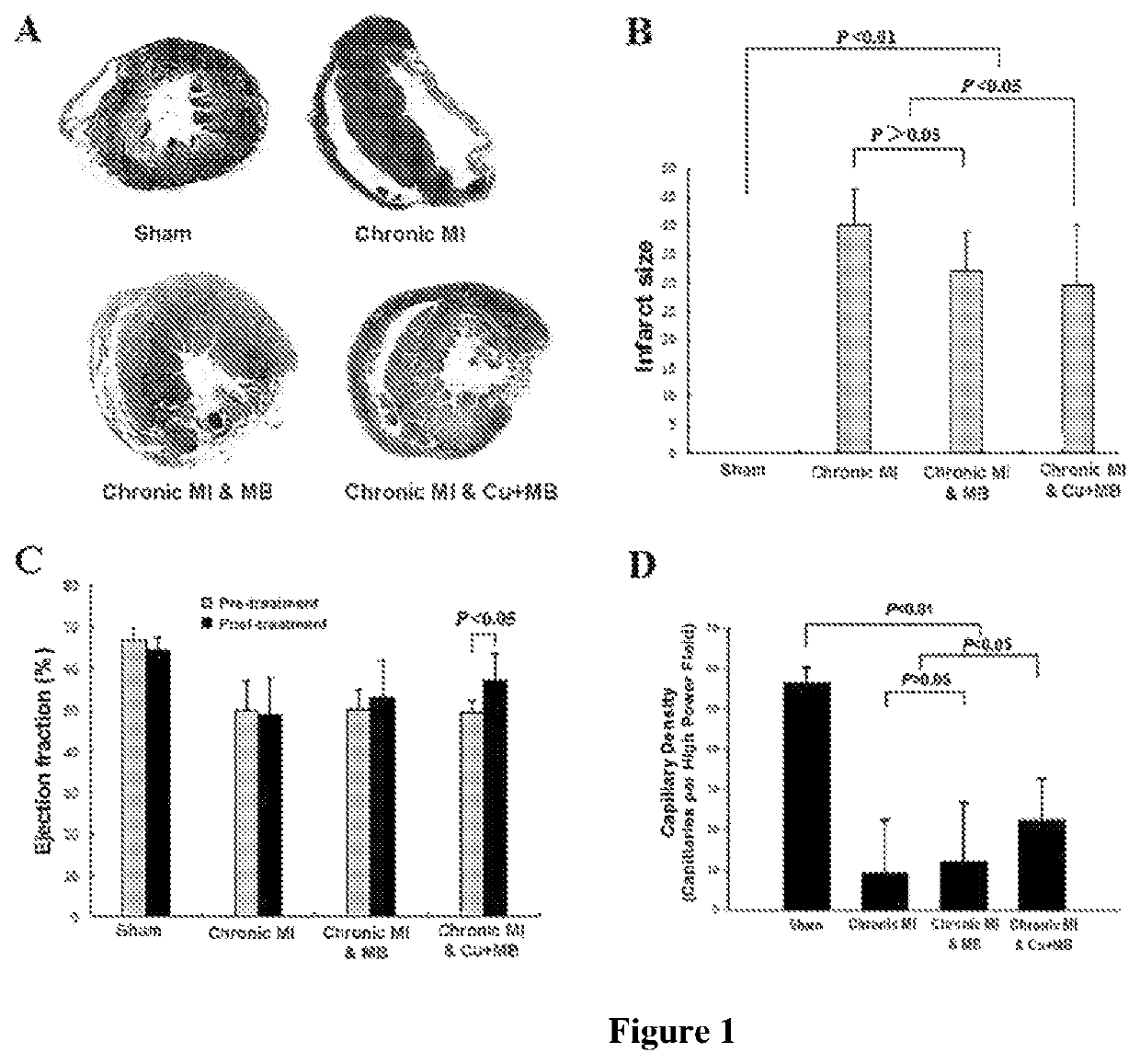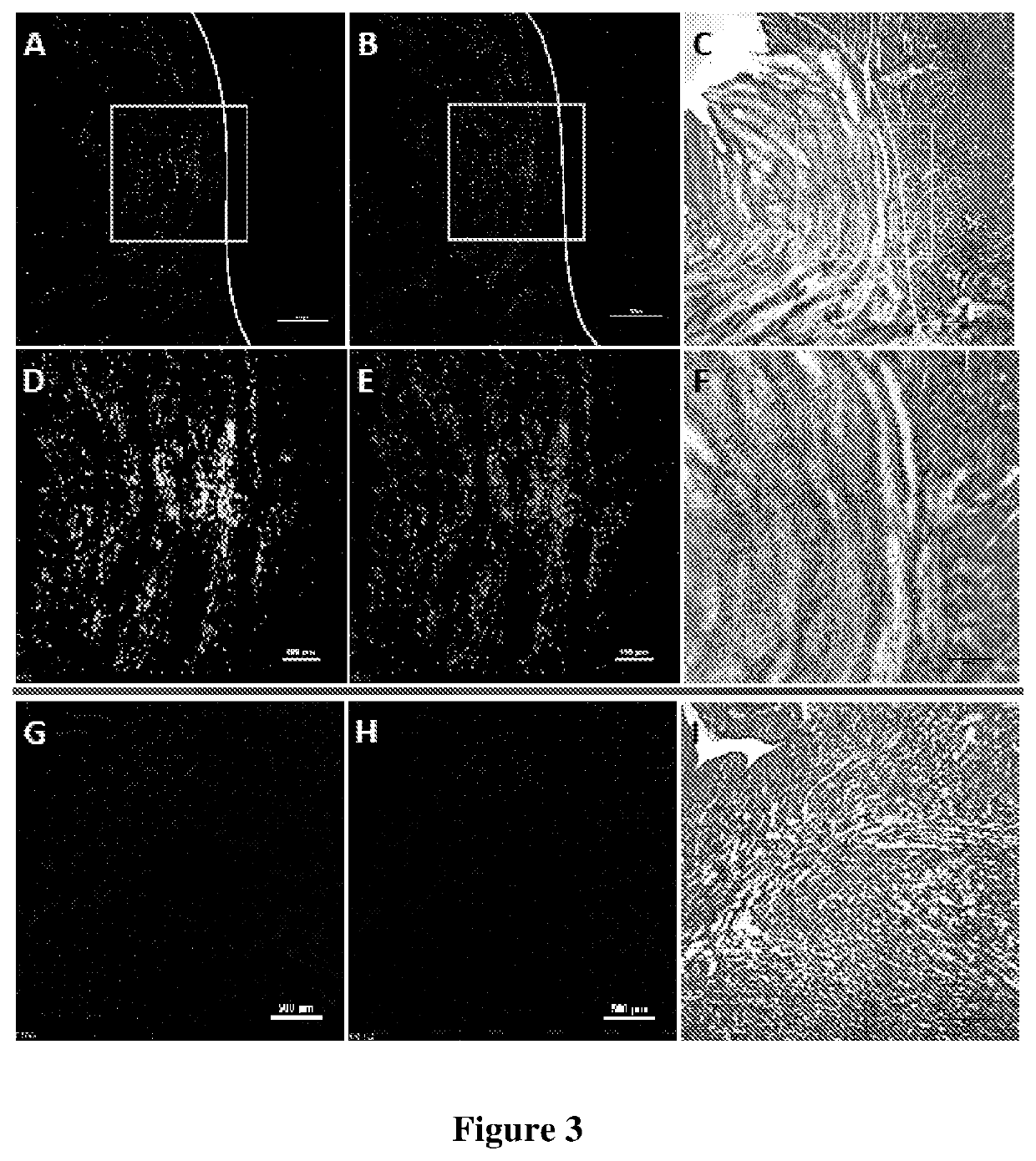Methods of tissue repair and regeneration
a tissue repair and regeneration technology, applied in the field of tissue repair and regeneration, can solve the problems of reducing self-repair capacity, imbalance between myocardial oxygen supply and demand, and reducing the self-repair of the injured organ
- Summary
- Abstract
- Description
- Claims
- Application Information
AI Technical Summary
Benefits of technology
Problems solved by technology
Method used
Image
Examples
example 1
Use of Ultrasound Mediated Cu-Albumin Microbubble to Improve BMSCs Homing in Chronic Ischemic Heart
[0231]To orient the copper supplement, this experiment used Cu-albumin-microbubble. Located and irradiated with ultrasound, copper was released from the bubble to the target area of heart, increasing copper concentration in the ischemic region. Pilot experiments showed that the oriented supplement of copper to the heart relieved the symptoms of chronic cardiac ischemia. Besides, vitro BMSCs culture methods have been well established, and BMSCs are suitable tracking cells for they are typical homing stem cells. New Zealand white rabbits are one of the favorable model animals in the area of cardiac research. As well, they are ideal for the tracking of homing autologous BMSCs. BMSCs were cultured and labeled, then injected into the myocardial infarcted rabbits. With treatment of Cu-albumin-microbubble, the re-homing of BMSCs to the chronic ischemic heart was observed through the labeled f...
example 2
Copper Ultrasound Contrast Microbubble Targeted Therapy for Ischemia Myocardial Infarction Model in Rhesus Monkey
[0266]This experiment was conducted in Rhesus monkeys. Ischemia myocardial infarction model was established by coronary artery ligation operation. Four weeks after operation, the ischemic cardiac tissue was fully replaced by collagenous fiber and became infarcted tissue. Then the ultrasound-guided copper microbubble targeted therapy was performed to treat myocardial infarction for therapeutic effective assessment. The Rhesus monkey possess high-order heart resemble that of human with a similar internal structure, electrical activity, distribution of coronary arteries, coronary collateral circulation, placement and attachment in the thoracic cavity. Thus, Rhesus monkey model of myocardial infarction would provide a better surrogate for myocardium infarction condition in humans.
[0267]1.1 Establishment of Ischemia Myocardial Infarction Model in Rhesus Monkey
[0268]Prior to su...
example 3
Treatment of Ischemic Brain Injury in Rats by Copper-Containing Biological Materials
[0334]In order to explore a new method for the treatment of cerebral ischemia, this example utilizes copper nanomaterials to treat ischemia rat model to test the therapeutic effect on angiogenesis.
[0335]1. Experimental Methods
[0336]1.1 Establishment of Rats Ischemia Model
[0337]Healthy male Sprague-Dawley (SD) rats body weight 270±15 g) were raised in the room with constant temperature and humidity and 12 hours alternation of light-dark cycle. The rats were treated with preoperative fasting for 12 hours and free supply of drinking water.
[0338]1.2 Technical Routes
[0339]Rats were divided into 5 groups randomly: Sham group, IR group, IR+Cu group, IR+NM group, IR+Cu−NM group. Brain ischemia rats were respectively injected with the same volume of Cu, NM, Cu−NM material 10 mu (L) into the stereotaxic ventricle on 7 days after surgical operation, and nerve function score and TTC staining was performed in 14 ...
PUM
| Property | Measurement | Unit |
|---|---|---|
| diameter | aaaaa | aaaaa |
| diameter | aaaaa | aaaaa |
| thickness | aaaaa | aaaaa |
Abstract
Description
Claims
Application Information
 Login to View More
Login to View More - R&D
- Intellectual Property
- Life Sciences
- Materials
- Tech Scout
- Unparalleled Data Quality
- Higher Quality Content
- 60% Fewer Hallucinations
Browse by: Latest US Patents, China's latest patents, Technical Efficacy Thesaurus, Application Domain, Technology Topic, Popular Technical Reports.
© 2025 PatSnap. All rights reserved.Legal|Privacy policy|Modern Slavery Act Transparency Statement|Sitemap|About US| Contact US: help@patsnap.com



